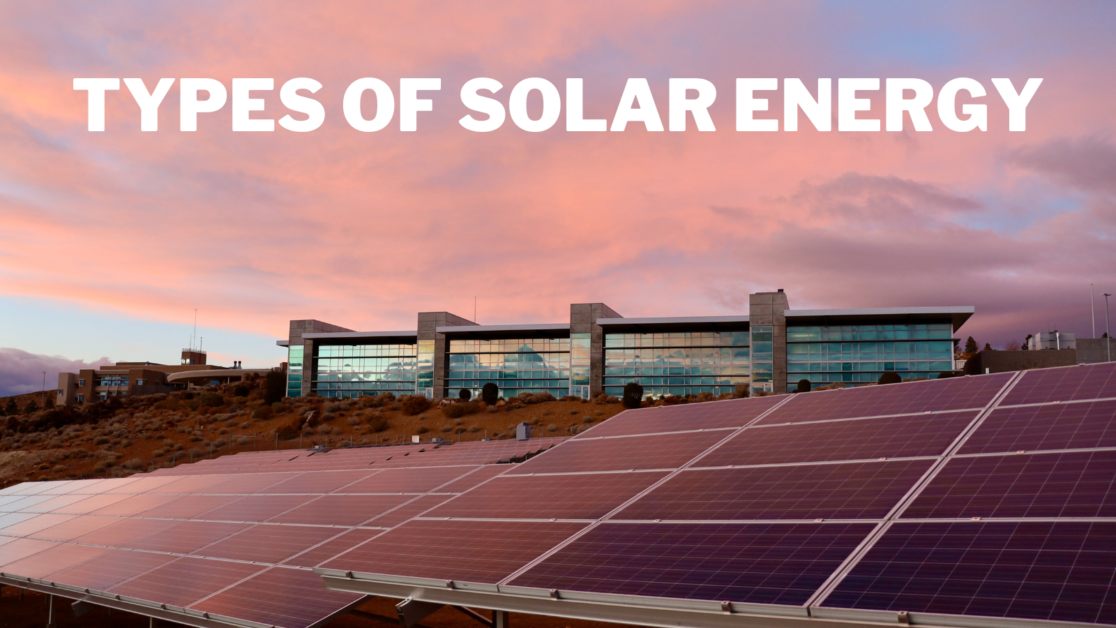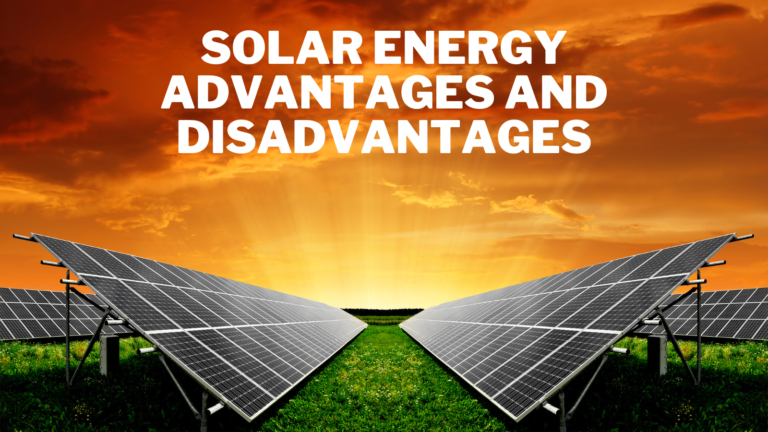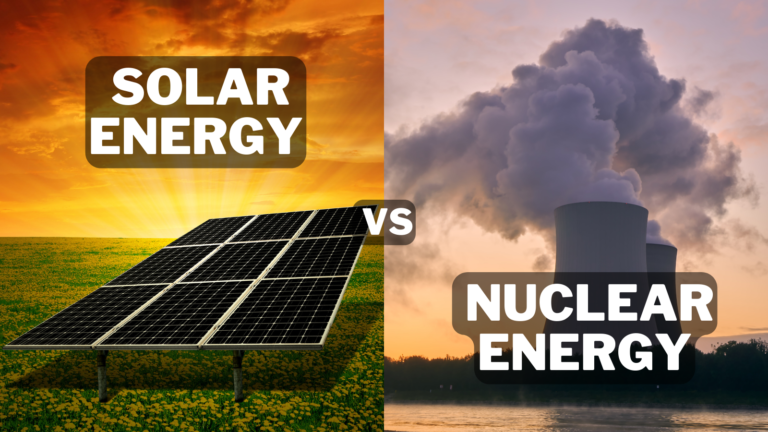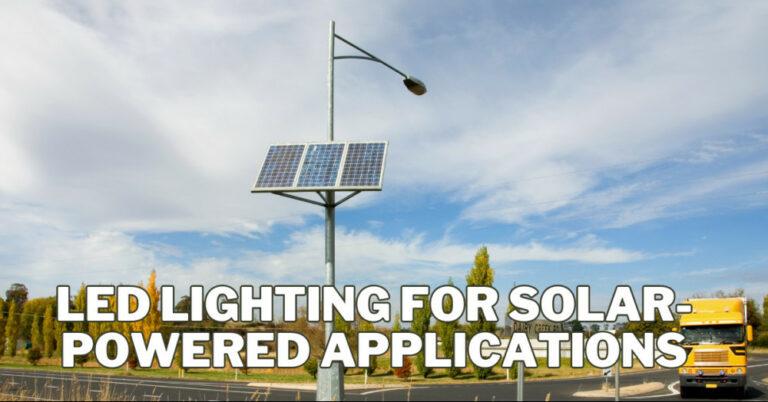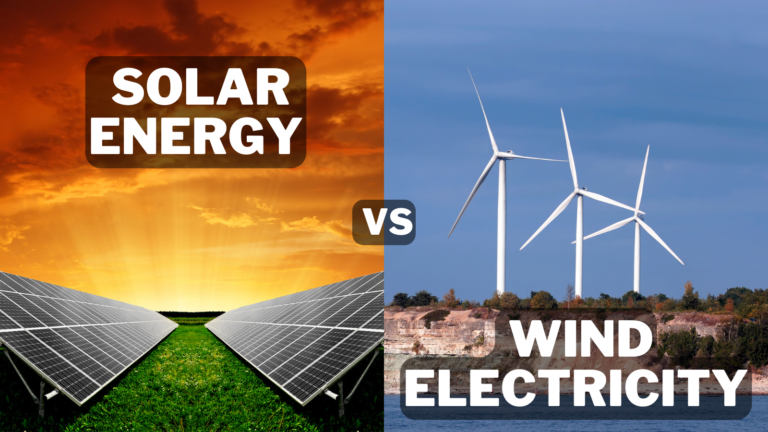Types Of Solar Energy
Types Of Solar Energy
Solar energy is a renewable energy source that is derived from the sun. It is one of the world's most abundant energy sources and has the potential to meet its energy needs many times.
This blog post will discuss different types of solar energy in detail, exploring how they work and their respective advantages. By the end of this article, you'll better understand the differences between all solar energy and its benefits.
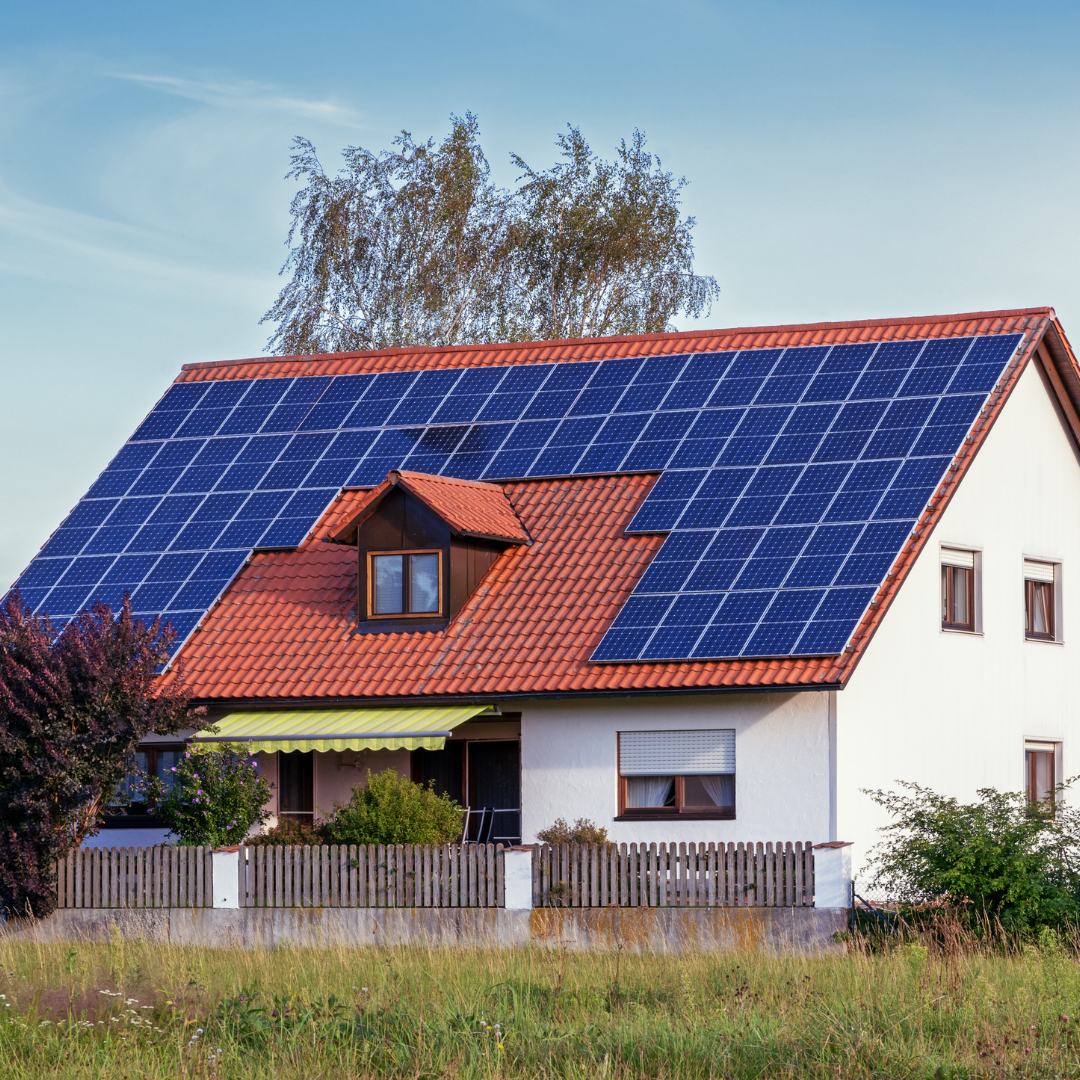
1. Photovoltaic (PV) Solar Energy
Photovoltaic (PV) solar energy is today's most common type. It involves using solar panels of silicon cells that absorb sunlight and convert it into electricity. When the sun's rays hit the silicon cells, they create an electric field that allows electrons to flow, which generates electricity.
The process of converting sunlight into electricity using PV solar panels can be broken down into several steps:
Absorption
The solar panels absorb sunlight, consisting of tiny particles called photons.
Excitation
The photons excite the electrons in the silicon cells, causing them to break free from their atoms and create a flow of electricity.
Collection
The flow of electrons is collected by metal conductors on the surface of the solar panels and directed into a wire.
Conversion
The wire carries the electricity to an inverter, which converts the direct current (DC) electricity produced by the solar panels into alternating current (AC) electricity that can be used to power homes and businesses.
One of the main advantages of PV solar energy is that it is a clean, renewable energy source that does not produce any greenhouse gas emissions. Unlike fossil fuels, which emit harmful pollutants into the air, PV solar energy produces no emissions or waste products. This makes it a sustainable and environmentally friendly source of energy.
In addition, PV solar energy is becoming increasingly affordable, making it more accessible to homeowners and businesses.
Technology advancements have led to more efficient solar panels that can generate more electricity from the same amount of sunlight.
As a result, the cost of solar energy has dropped significantly over the past decade, making it more cost-effective than ever before.
PV solar energy is also a versatile source of energy that can be used in various settings. It can be installed on rooftops, on the ground, or even in space.
PV solar energy is commonly used to power homes and buildings and provides electricity to remote areas. It also powers streetlights, traffic signals, and other small devices.
PV solar energy is a valuable source of renewable energy that has the potential to transform our energy system and reduce our reliance on fossil fuels.
Its advantages include its cleanliness, affordability, versatility, and potential to provide energy to even the most remote locations. As technology continues to improve, we can expect to see even greater adoption of PV solar energy in the coming years.
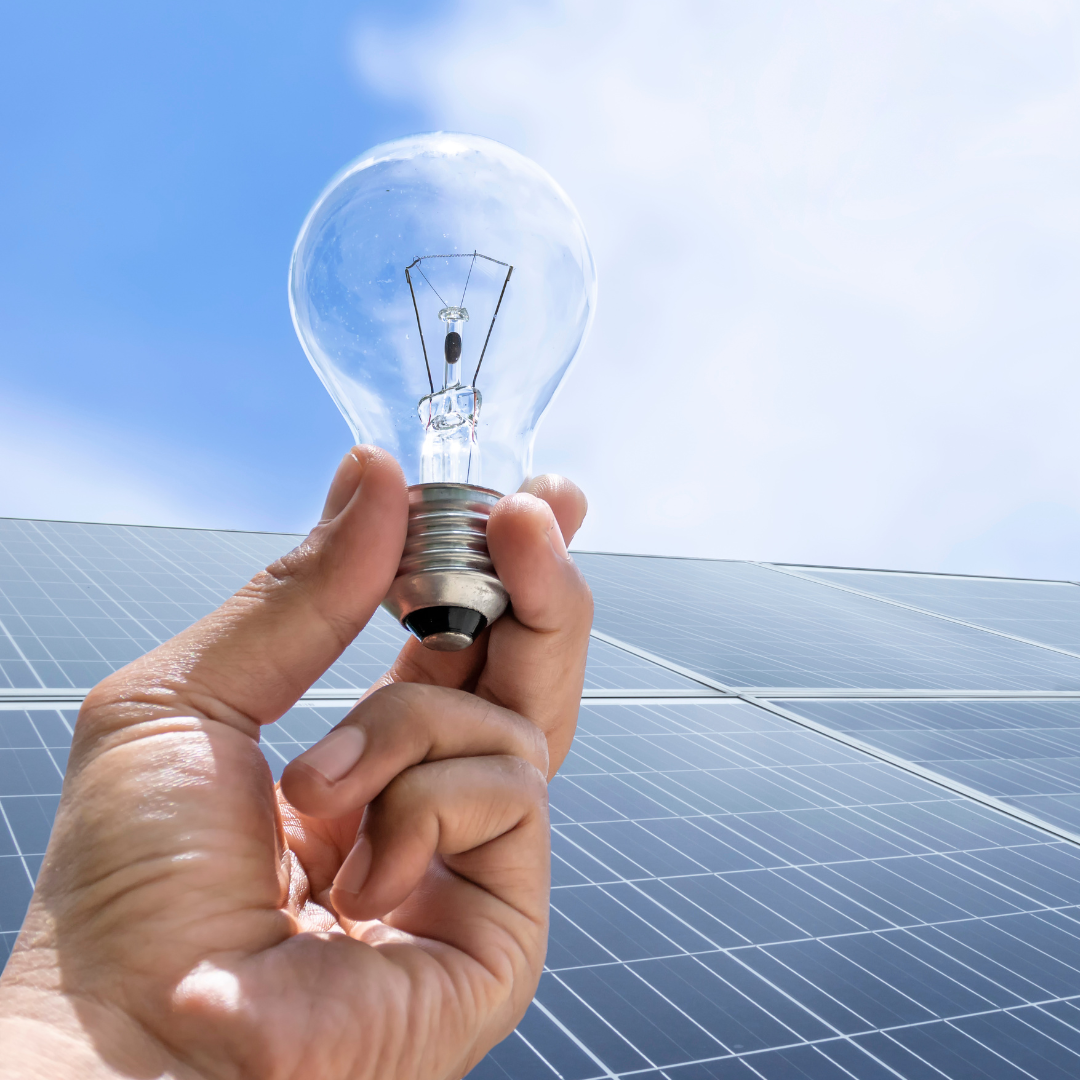
2. Concentrated Solar Energy
Concentrated solar energy, also known as solar thermal energy, is another type of solar energy that uses mirrors or lenses to concentrate sunlight onto a small area.
This concentrated sunlight is then used to generate heat, produce electricity, heat water, or various other applications.
There are several different types of concentrated solar energy systems, but they all work on the same basic principle of concentrating sunlight onto a small area.
One common type of system is a parabolic trough, which consists of a long, curved mirror that reflects sunlight onto a tube filled with a heat-transfer fluid.
The sunlight heats the fluid and then used to generate steam, which can power a turbine and produce electricity.
Another type of concentrated solar energy system is a solar power tower, which uses a large field of mirrors, called heliostats, to concentrate sunlight onto a central tower.
The building contains a heat-transfer fluid heated by the concentrated sunlight, and the resulting steam is used to generate electricity.
Concentrated solar energy systems have several advantages over other types of solar energy.
One of the main advantages is that they can generate large amounts of electricity, making them ideal for use in large-scale power plants.
Concentrated solar energy systems can also generate electricity by storing heat in thermal storage systems, even when the sun is not shining.
In addition, concentrated solar energy systems can be more efficient than PV solar energy since they can capture and use more sunlight that falls on them.
They also have the potential to produce heat for various industrial applications, such as producing steam for industrial processes or desalinating water.
However, there are also some disadvantages to concentrated solar energy systems. One of the main disadvantages is that they can be expensive to build and maintain, especially compared to other solar energy types.
They also require a large amount of land and can have environmental impacts, such as land use changes and habitat fragmentation.
Concentrated solar energy is a valuable renewable energy source that can generate large amounts of electricity and heat for various applications. Its advantages include its efficiency, ability to store heat, and versatility.
However, its disadvantages include its high cost and potential environmental impacts. As technology continues to improve, we can expect to see continued development and adoption of concentrated solar energy systems in the coming years.
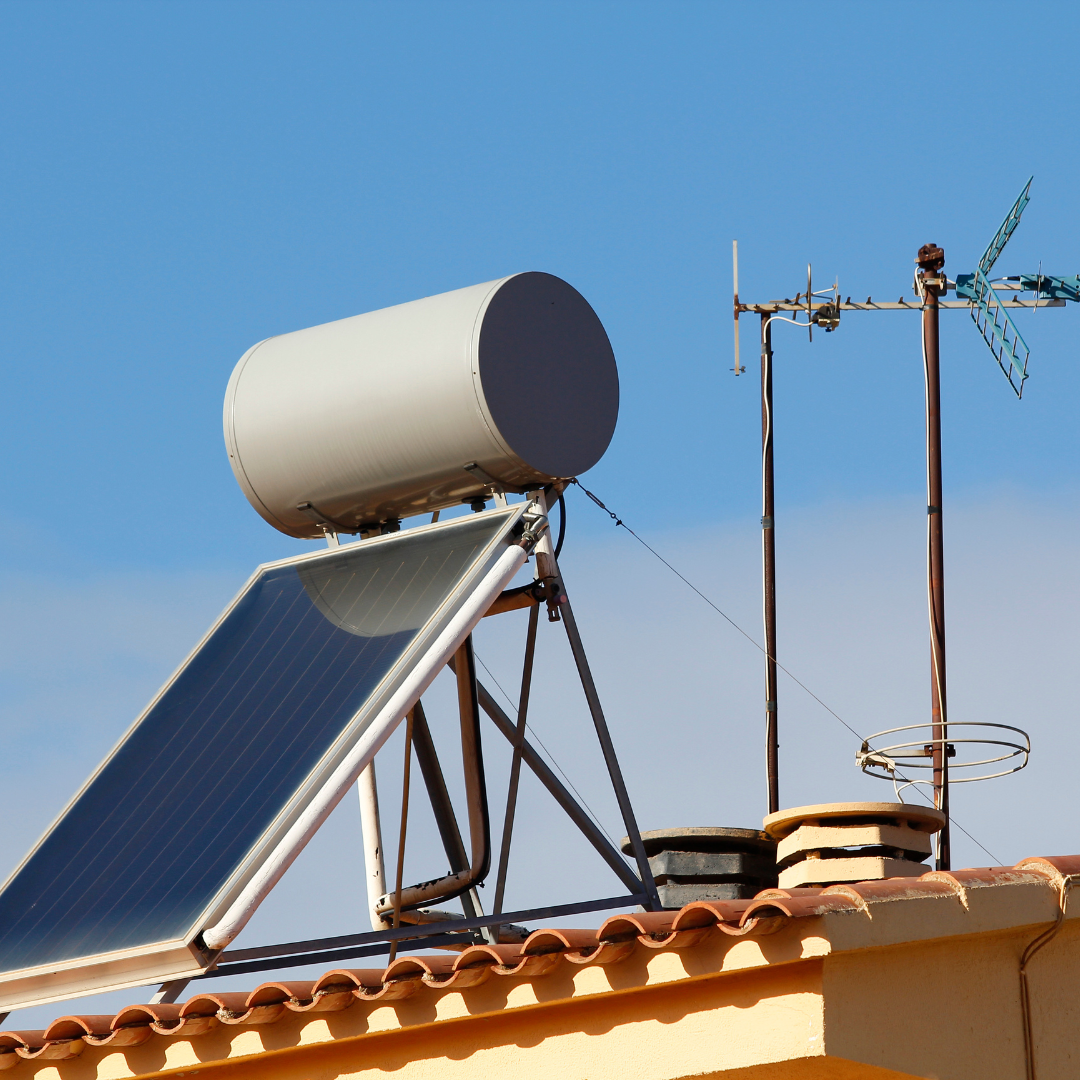
3. Water Heating Solar Energy
Solar water heating is another common application of solar energy. It involves using solar collectors to capture sunlight and convert it into heat, then heat water for residential or commercial use.
There are two main solar water heating systems: passive and active. Passive solar water heating systems rely on gravity and natural convection to circulate water, while dynamic systems use pumps to move the water.
Both procedures typically use flat-plate or evacuated tube collectors to capture sunlight and convert it into heat.
Flat-plate collectors are the most common type used in solar water heating systems. They consist of a flat, rectangular box that is insulated and covered with a glass or plastic cover.
Some tubes or pipes inside the box contain water or a heat-transfer fluid. The lines or pipes are coated with an absorber material that absorbs sunlight and converts it into heat.
The heat is then transferred to the water or heat-transfer fluid used to heat the water in a storage tank.
Evacuated tube collectors are another type used in solar water heating systems. They consist of a series of glass tubes evacuated to create a vacuum. Each box contains a metal absorber that is connected to a heat-transfer fluid.
The absorber absorbs sunlight and converts it into heat, which is transferred to the heat-transfer fluid. The heat-transfer fluid is then used to heat the water in a storage tank.
Solar water heating systems have several advantages over conventional water heating systems. One of the main advantages is that they can save a significant amount of energy and reduce greenhouse gas emissions.
Solar water heating systems can provide hot water for showers, washing machines, dishwashers, and heating swimming pools and spas.
They are also cost-effective in the long run, as they can significantly reduce or eliminate the need for conventional water heating systems.
However, there are also some disadvantages to solar water heating systems. One of the main disadvantages is that they require a relatively large amount of space for the collectors and the storage tank.
In addition, they could be more effective in areas with limited sunlight or in areas that experience frequent cloudy weather. They also require regular maintenance to ensure they operate at peak efficiency.
In conclusion, solar water heating is a practical application of solar energy that can significantly reduce energy use and greenhouse gas emissions. Its advantages include its cost-effectiveness, long-term savings, and versatility.
However, its disadvantages include the need for space and maintenance and limitations in areas with limited sunlight or frequent cloudy weather. As technology improves, we expect to see continued development and adoption of solar water heating systems in the coming years.

4. Solar Pool Heating
Solar pool heating is another application of solar energy that is recently gaining popularity. It involves using solar collectors to capture sunlight and convert it into heat, then heat the water in a swimming pool.
Several types of solar pool heating systems work on the same principle of using solar collectors to heat the water in the pool.
The most common type of solar pool heating system is a flat-plate collector system, consisting of a series of flat panels installed on a roof or a ground-mounted structure near the pool.
The panels are made of dark, heat-absorbing material and are connected to a series of pipes that circulate water from the collection through the boards and back into the pool.
Another type of solar pool heating system is a vacuum tube collector system, which uses a series of glass tubes to capture sunlight and heat the water in the pool.
The lines are connected to a manifold that circulates the water from the reservoir through the pipes and back into the pool.
Solar pool heating systems have several advantages over conventional pool heating systems. One of the main advantages is that they can significantly reduce pool operating costs, as they use renewable energy from the sun rather than electricity or gas. They are also environmentally friendly, as they do not produce any greenhouse gas emissions.
In addition, solar pool heating systems can extend the swimming season and allow for more comfortable swimming temperatures. They can also increase the value of a property, as they are an attractive and desirable feature for many home buyers.
However, there are also some disadvantages to solar pool heating systems. One of the main disadvantages is that they can be expensive to install, especially when compared to conventional pool heating systems.
They also require a relatively large amount of space for the collectors and can have aesthetic impacts on the property.
In conclusion, solar pool heating is a practical application of solar energy that can significantly reduce the operating costs of a pool and increase its value.
Its advantages include its cost-effectiveness, environmental friendliness, and ability to extend the swimming season.
However, its disadvantages include its high installation costs and potential aesthetic impacts. As technology improves, we expect continued development and adoption of solar pool heating systems in the coming years.
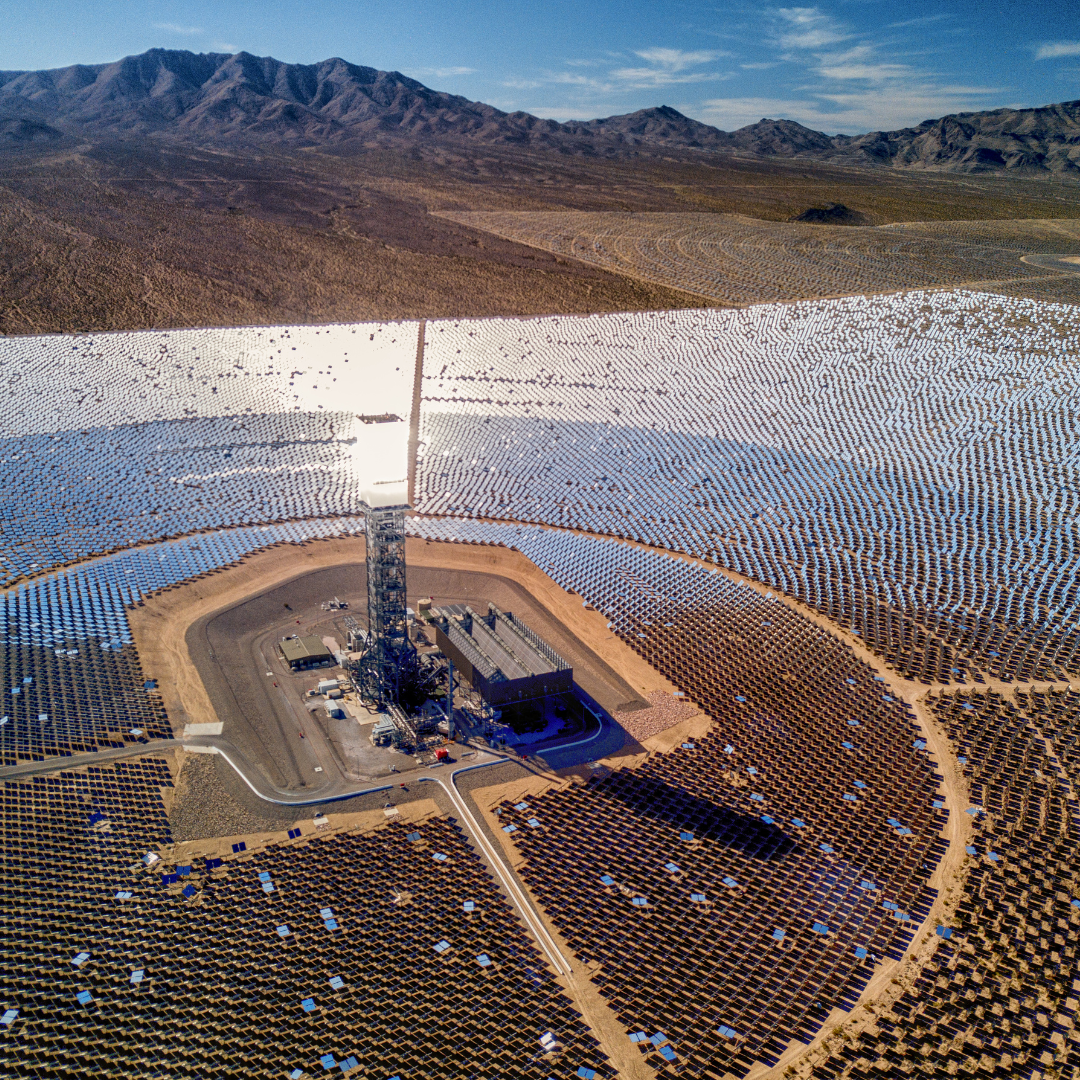
5. Thermal Solar Energy
Thermal solar energy is a technology that harnesses the sun's power to generate heat, which can be used for various purposes, such as space heating, water heating, and industrial processes.
Concentrated solar power (CSP) and solar thermal collectors are two main thermal energy system types.
Concentrated Solar Power (CSP)
CSP is a type of thermal solar energy that uses mirrors or lenses to concentrate sunlight onto a small area, creating intense heat that generates electricity. Several CSP systems include parabolic troughs, power towers, and dish systems.
Parabolic trough systems use long curved mirrors to concentrate sunlight onto a receiver tube filled with a heat transfer fluid, generating steam and a turbine to generate electricity.
Power tower systems use a field of mirrors, heliostats, to focus sunlight onto a receiver tower, which heats a heat transfer fluid and generates steam to drive a turbine.
Dish systems use a large parabolic dish to concentrate sunlight onto a receiver, which heats a heat transfer fluid and generates steam to drive a turbine.
CSP systems have several advantages over other types of solar energy, as they can provide power even when the sun is not shining.
CSP systems can use thermal energy storage to store heat generated during the day and use it to generate power at night or during cloudy weather.
CSP systems are also very efficient, as they can achieve high temperatures and generate high-quality steam for electricity generation.
Solar Thermal Collectors
Solar thermal collectors are another thermal solar energy system that generates heat for various applications, including space heating, water heating, and industrial processes.
Solar thermal collectors are usually installed on the roof of a building or a ground-mounted structure and can be either flat-plate or evacuated tube collectors.
Flat-plate collectors are the most common type of solar thermal collector and consist of a flat, rectangular box that is insulated and covered with a glass or plastic cover.
Some tubes or pipes inside the box contain water or a heat-transfer fluid.
The tubes or pipes are coated with an absorber material that absorbs sunlight and converts it into heat, which is transferred to the water or heat-transfer fluid, which can then be used for space heating or water heating.
Evacuated tube collectors are similar to flat-plate collectors but use a series of evacuated glass tubes to create a vacuum. Each box contains a metal absorber that is connected to a heat-transfer fluid.
The absorber absorbs sunlight and converts it into heat, which is transferred to the heat-transfer fluid, which can then be used for space or water heating.
Solar thermal collectors have several advantages over other types of solar energy, as they can generate heat for various applications and be very efficient.
Solar thermal collectors are also relatively simple and reliable, with few moving parts and minimal maintenance requirements.
In conclusion, thermal solar energy is a valuable technology that can generate heat for various applications, including electricity generation, space heating, water heating, and industrial processes.
Its advantages include its ability to provide power even when the sun is not shining, its high efficiency, and its simplicity and reliability.
However, its disadvantages include high upfront costs, space requirements for CSP systems, and aesthetic impacts for solar thermal collectors.
As technology improves, we expect to see continued development and adoption of thermal solar energy systems in the coming years.
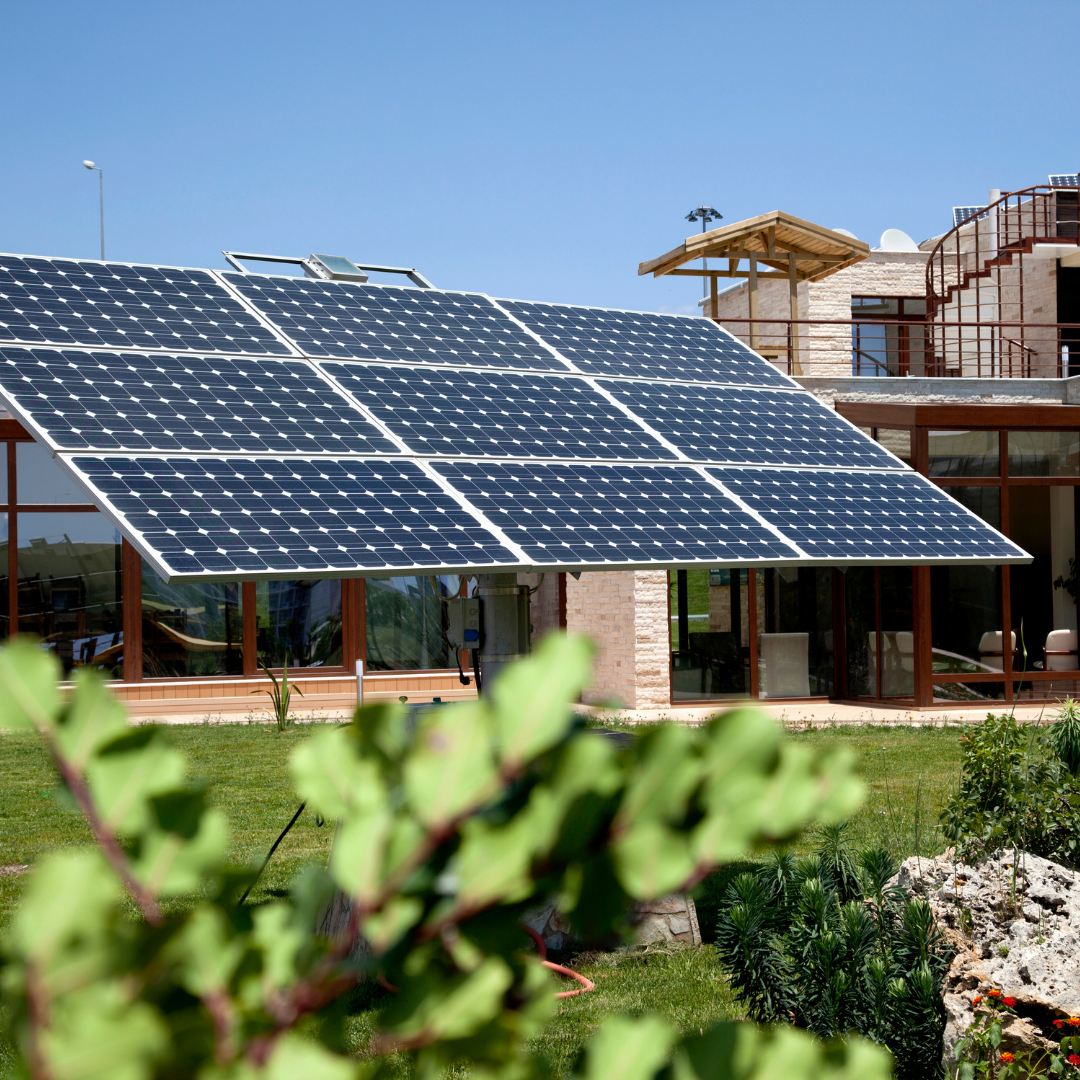
Conclusion
Solar energy is a rapidly growing and highly promising renewable energy source that has the potential to revolutionize the way we generate and use electricity. There are several different types of solar energy systems, each with its unique advantages and applications.
Photovoltaic solar energy is the most common type of solar energy used to generate electricity by converting sunlight directly into electrical current.
Concentrated solar energy systems, including parabolic trough systems, power tower systems, and dish systems, use mirrors or lenses to focus sunlight onto a small area, creating intense heat that can be used to generate electricity.
Solar thermal energy systems, including solar thermal collectors and concentrated solar power systems, use the sun's heat to generate energy for various applications, including space heating, water heating, and industrial processes.
Solar thermal collectors can be either flat-plate or evacuated tube collectors and are a simple and reliable way to generate heat for various applications.
While there are some challenges to the widespread adoption of solar energy, including high upfront costs and intermittency, the benefits of solar energy are significant and include reduced greenhouse gas emissions, energy independence, and job creation.
With continued technological advances and increased investment in solar energy, we expect continued growth and adoption of this promising renewable energy source in the coming years.
I trust you enjoyed this article about the Types Of Solar Energy. Please stay tuned for more blog posts to come shortly.
JeannetteZ
Your Opinion Is Important To Me
Thoughts? Ideas? Questions? I would love to hear from you. Please leave me your questions, experience, and remarks about this article on the Types Of Solar Energy in the comments section below. You can also reach me by email at Jeannette@Close-To-Nature.org.
Disclosure
This post may contain affiliate links. I earn from qualifying purchases as an Amazon Associate and other affiliate programs. Read my full affiliate disclosure.
You might also enjoy these blog posts:
15 Best Vegetables To Grow In Your Container Garden
All About Wild Turkeys – A Large Shy Bird
Interesting Facts About Woodpeckers
Healthy Natural Dog Food – Grant Your Dog A Longer Life
I did the keyword research for this blog
post in Jaaxy. Click on the banner
below and try it yourself for free.

